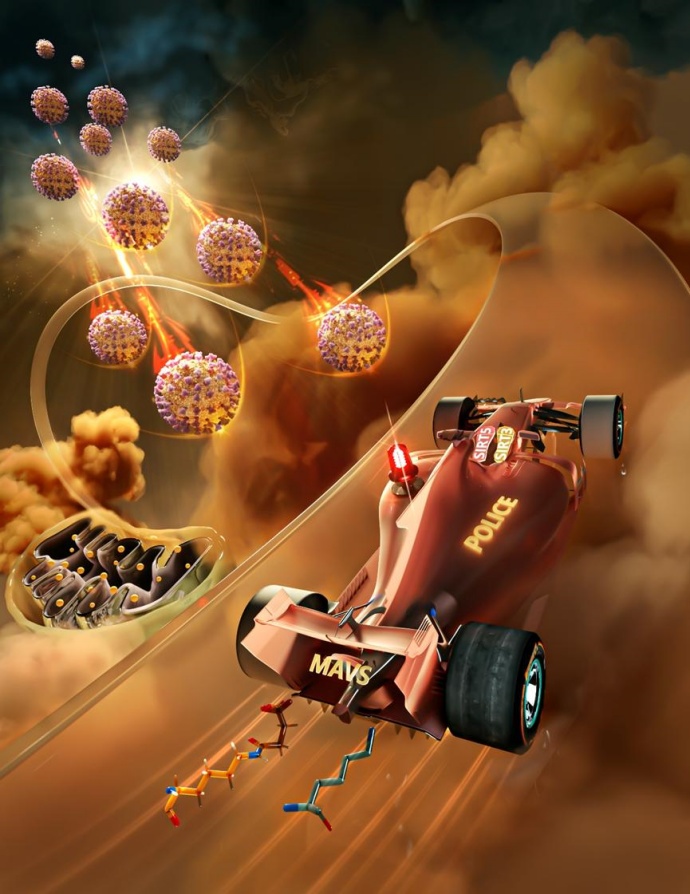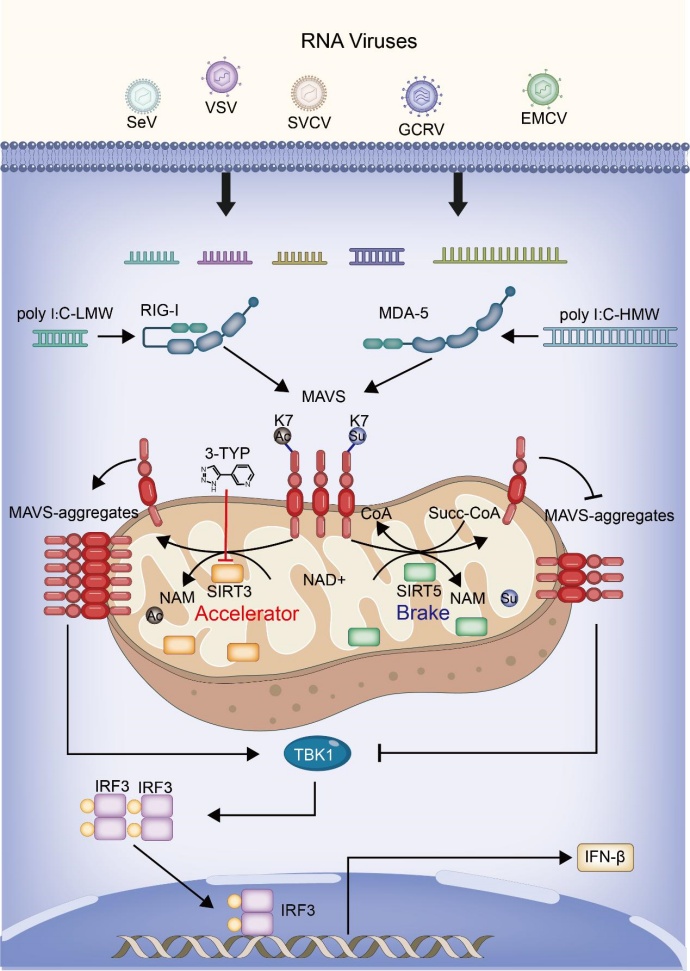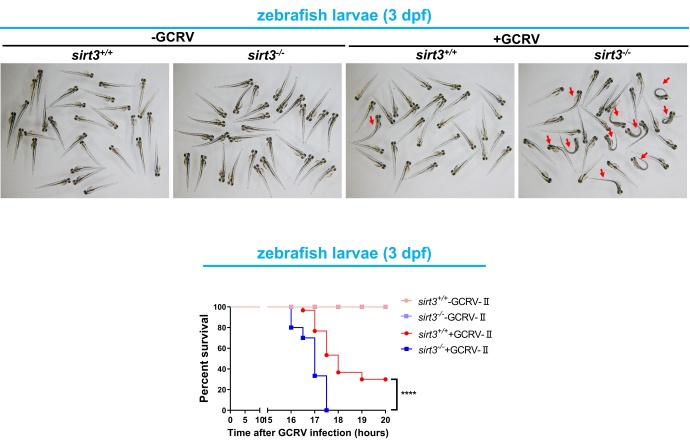
Newsroom
Researchers Reveal A Novel “Accelerator and Brake” Mechanism for Orchestrating Antiviral Innate Immunity
To effectively protect the host from viral infection while avoiding excessive immunopathology, the innate immune response must be tightly controlled. However, the precise regulation of antiviral innate immunity and the underlying mechanisms remain unclear.
A research group led by Prof. XIAO Wuhan from the Institute of Hydrobiology (IHB) of the Chinese Academy of Sciences identified that dual modifying of MAVS at lysine 7 by SIRT3-catalyzed deacetylation and SIRT5-catalyzed desuccinylation orchestrates antiviral innate immunity. The study was published in the Proceedings of the National Academy of Sciences (PNAS).
In this study, researchers discovered that SIRT3 interacts with MAVS to catalyze MAVS deacetylation at lysine residue 7 (K7), which promotes MAVS aggregation, as well as TBK1 and IRF3 phosphorylation, resulting in increased MAVS activation and enhanced type I interferon signaling.
The researchers then utilized the mouse and zebrafish as in vivo models, confirming that the loss of Sirt3 in mice and zebrafish renders them more susceptible to viral infection compared to their wild-type siblings.
Xiao’s team further analyzed the effect of Sirt3 and Sirt5 double knockout and discovered that Sirt3 and Sirt5 double-deficient mice exhibit the same viral susceptibility as their wild-type littermates, suggesting that loss of Sirt5 in Sirt3-deficient mice may counteract the increased viral susceptibility displayed in Sirt3-deficient mice.
This study not only demonstrated that SIRT3-catalyzed MAVS lysine 7 deacetylation positively regulates MAVS-mediated antiviral immunity in vitro and in vivo, but also uncover a previously unrecognized mechanism by which SIRT3 acts as an accelerator and SIRT5 as a brake to orchestrate antiviral innate immunity.

The model proposes that SIRT3 acts as an accelerator and SIRT5 as a brake to orchestrate antiviral innate immunity

The working model of dual modifying of MAVS at lysine 7 by SIRT3-catalyzed deacetylation and SIRT5-catalyzed desuccinylation orchestrates antiviral innate immunity

Sirt3-deficient zebrafish are more susceptible to GCRV infection